How a formidable Kiran Bedi clammed up and lost the race for Delhi
I first met Kiran Bedi, a few days after she had been announced as the Bharatiya Janata Party’s chief ministerial candidate, to seek permission to photograph her campaign. She was accessible and happy to give lengthy interviews, and we met at her basement office in Uday Park in south Delhi on Jan. 24. It was crammed with trophies, certificates and other paraphernalia from her long career as a police officer.
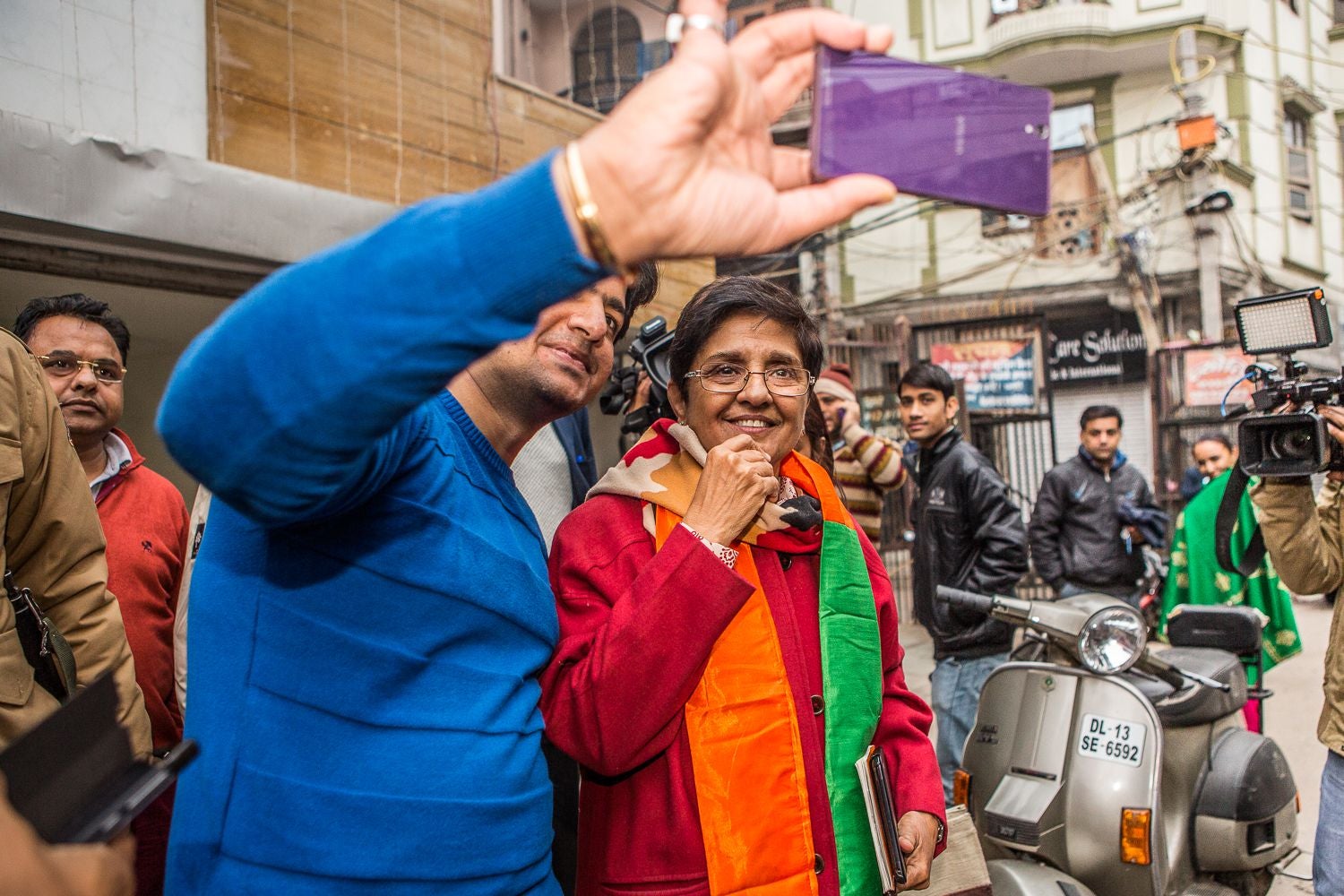

I first met Kiran Bedi, a few days after she had been announced as the Bharatiya Janata Party’s chief ministerial candidate, to seek permission to photograph her campaign. She was accessible and happy to give lengthy interviews, and we met at her basement office in Uday Park in south Delhi on Jan. 24. It was crammed with trophies, certificates and other paraphernalia from her long career as a police officer.
Unlike campaigns of other star candidates, Bedi had very few party people milling about her. In fact, on that day, there were so few people present it was hard to tell that there was anything of political significance going on there.

In the first few days of her campaign, Bedi arrived in Krishna Nagar by 7:30 each morning, taking a brisk walk around parts of her constituency. This way she was able to meet and interact with prospective voters.
Although it was still cold, and not many people were out and about, some supporters would gather outside their houses to garland her as she passed by, or stand on their balconies and wave. Many people invited her into their homes, feeding her pieces of mithai, and she happily obliged. The mood was cheerful and upbeat.

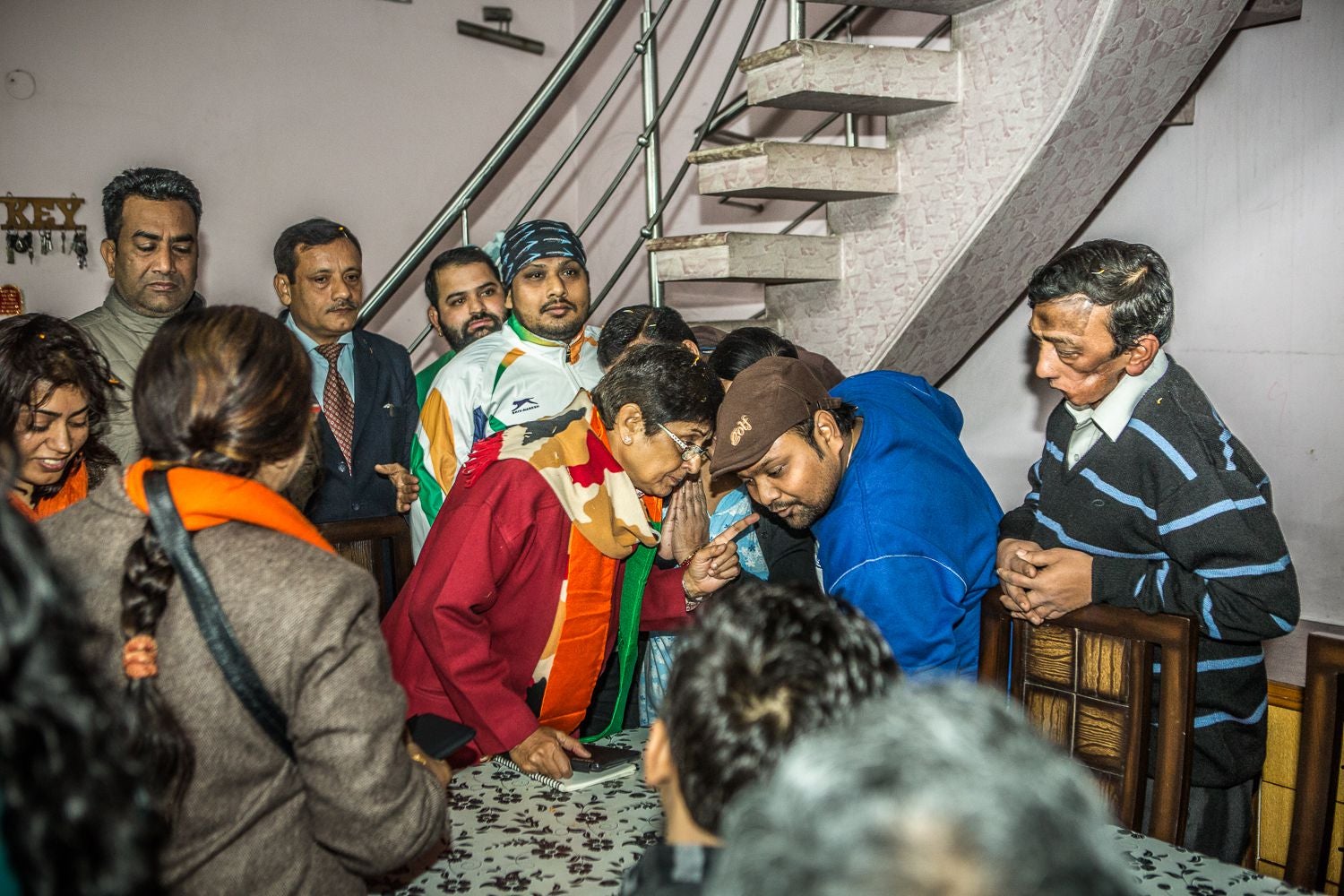
Often people would stop to talk about their problems—the lack of water supply or cleanliness in their area—and Bedi would tell them about her “6P 6S” blueprint for Delhi, assuring them that their grievance fell under a bullet point in her plan.

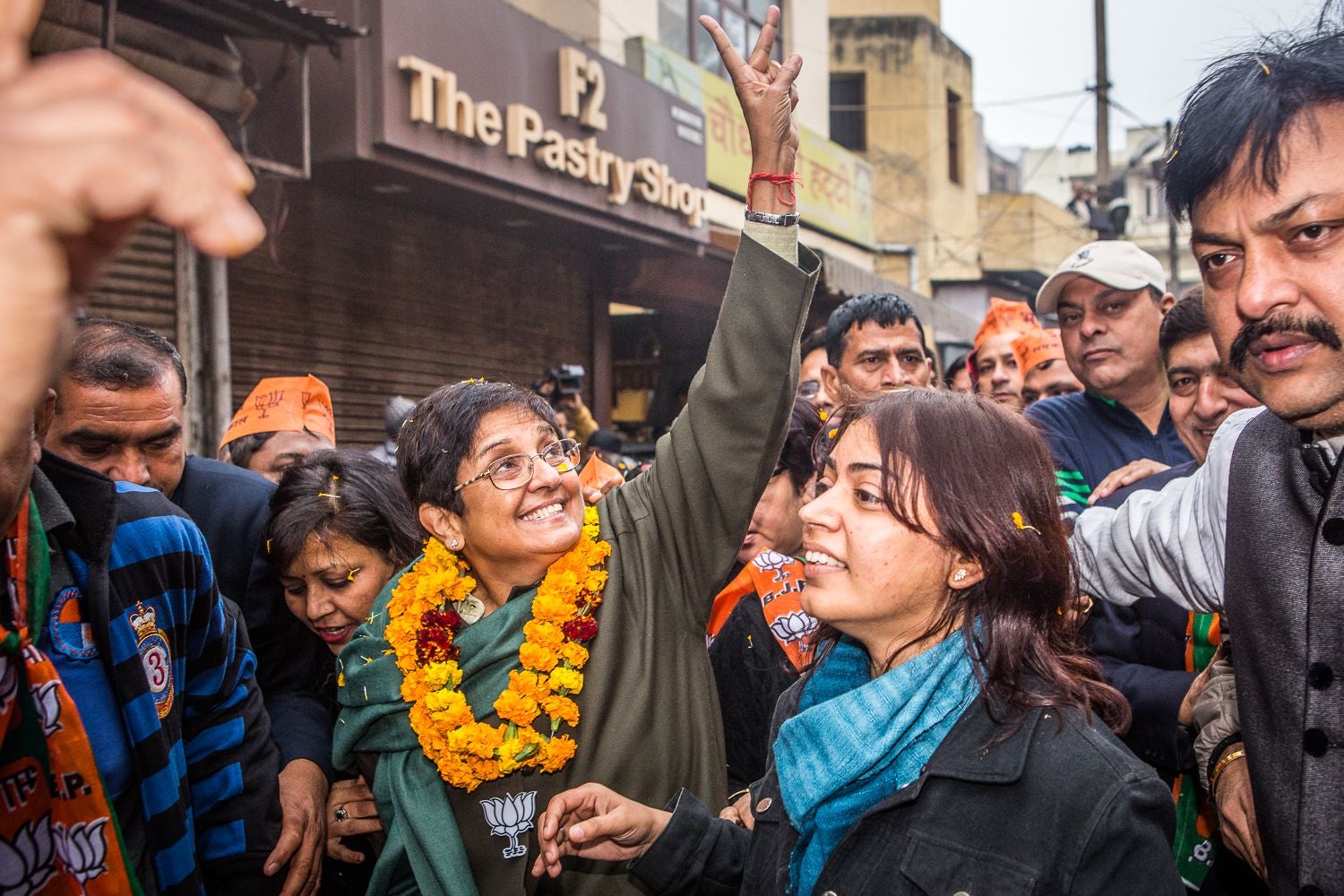
One morning, she was in a joggers park in Krishna Nagar, and she enthusiastically joined some people playing badminton and grabbed a racket to play a few shots. Afterwards, she talked about her deep love for sports, especially tennis, adding that sportspersons make for great leaders.
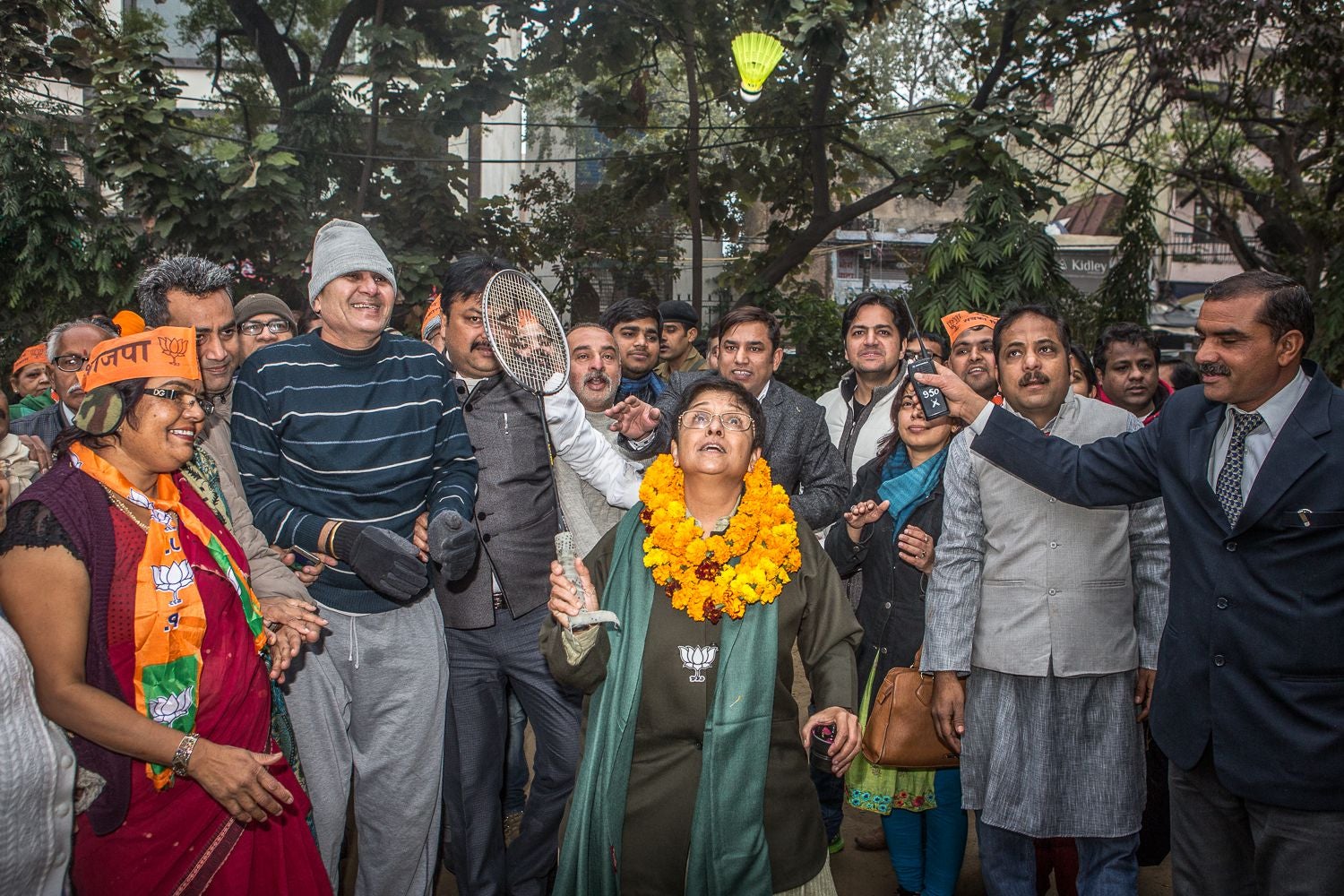
But despite her best efforts to connect with voters in a personal way, there was a certain brusqueness about the way she spoke to her party volunteers and the media that made her quite unpopular with these two critical pillars of support.
More than once, I heard her tell her overzealous volunteers, “Don’t crowd around me, give me space. I don’t need your help to walk.” It appeared as if there was a disconnect between the type of campaign she wanted to run, and the kind they had designed for her.
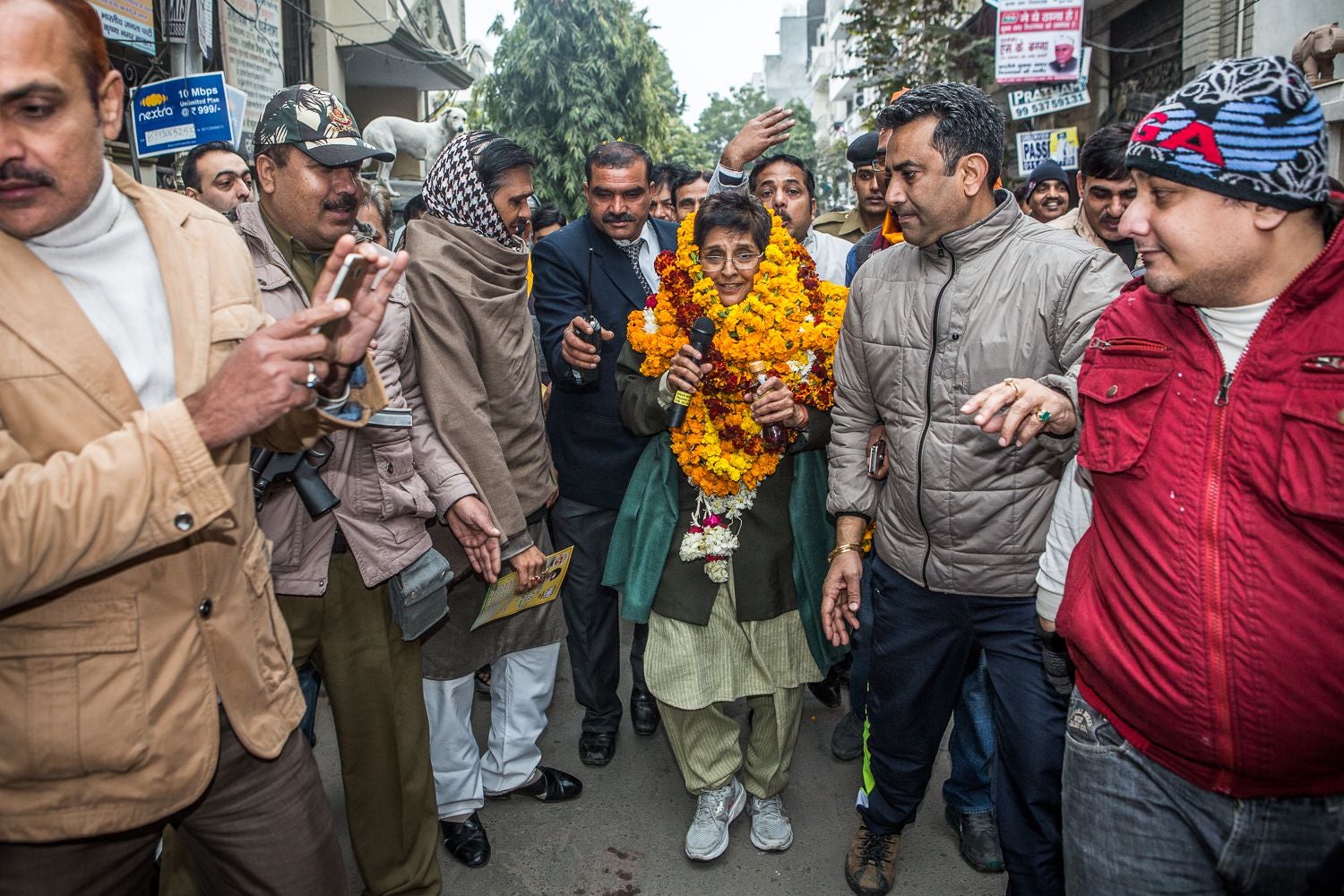
“People are complaining about your presence here,” I overheard her telling a TV journalist one day. “They are saying, Kiran Bedi is coming here only for the television cameras and not to serve the people. I request you to leave.” Then a series of media blunders followed.
I took a break from photographing her for three days, but when I returned the character of the campaign had completely transformed. The daily morning padayatras had been replaced with roadshows.
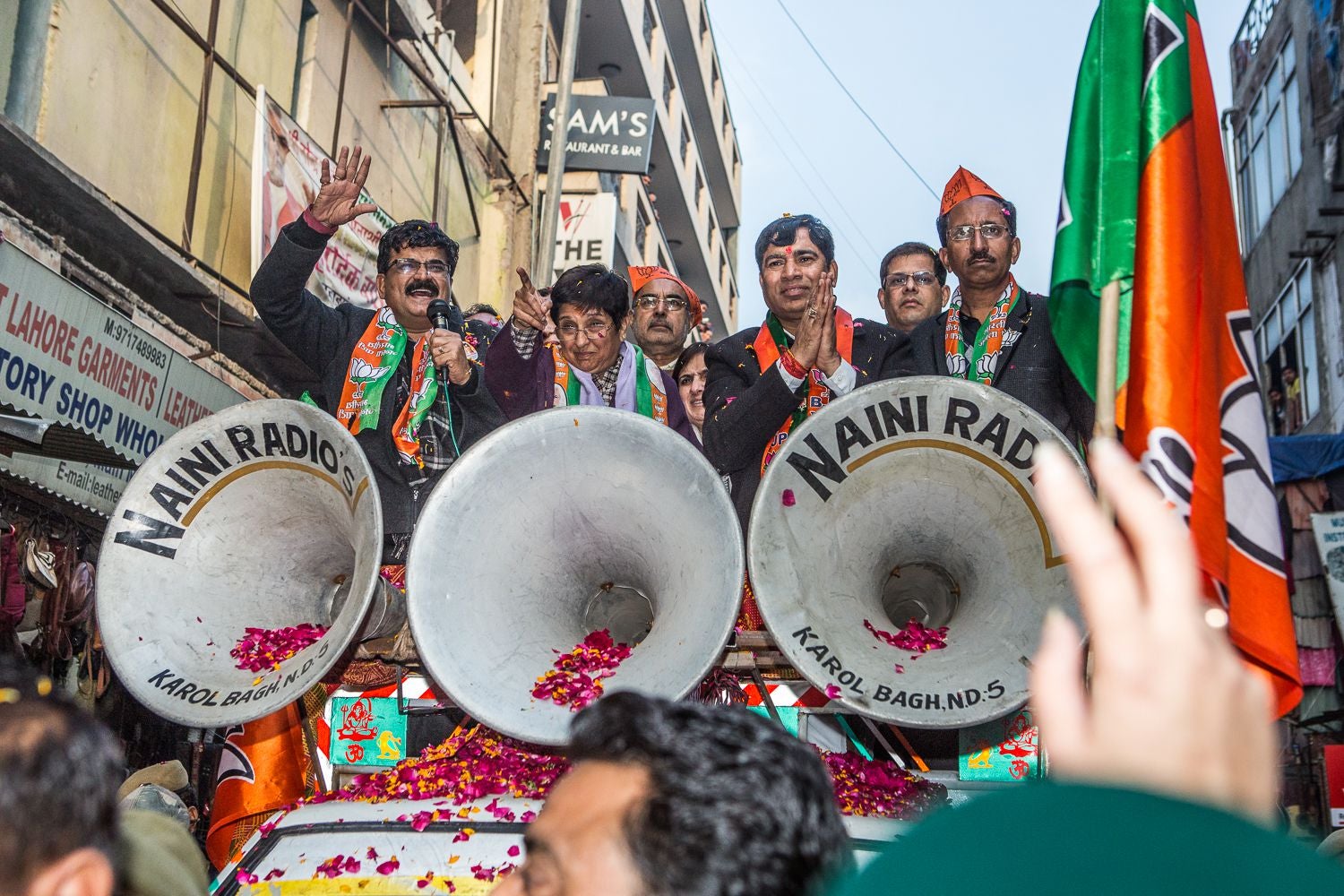
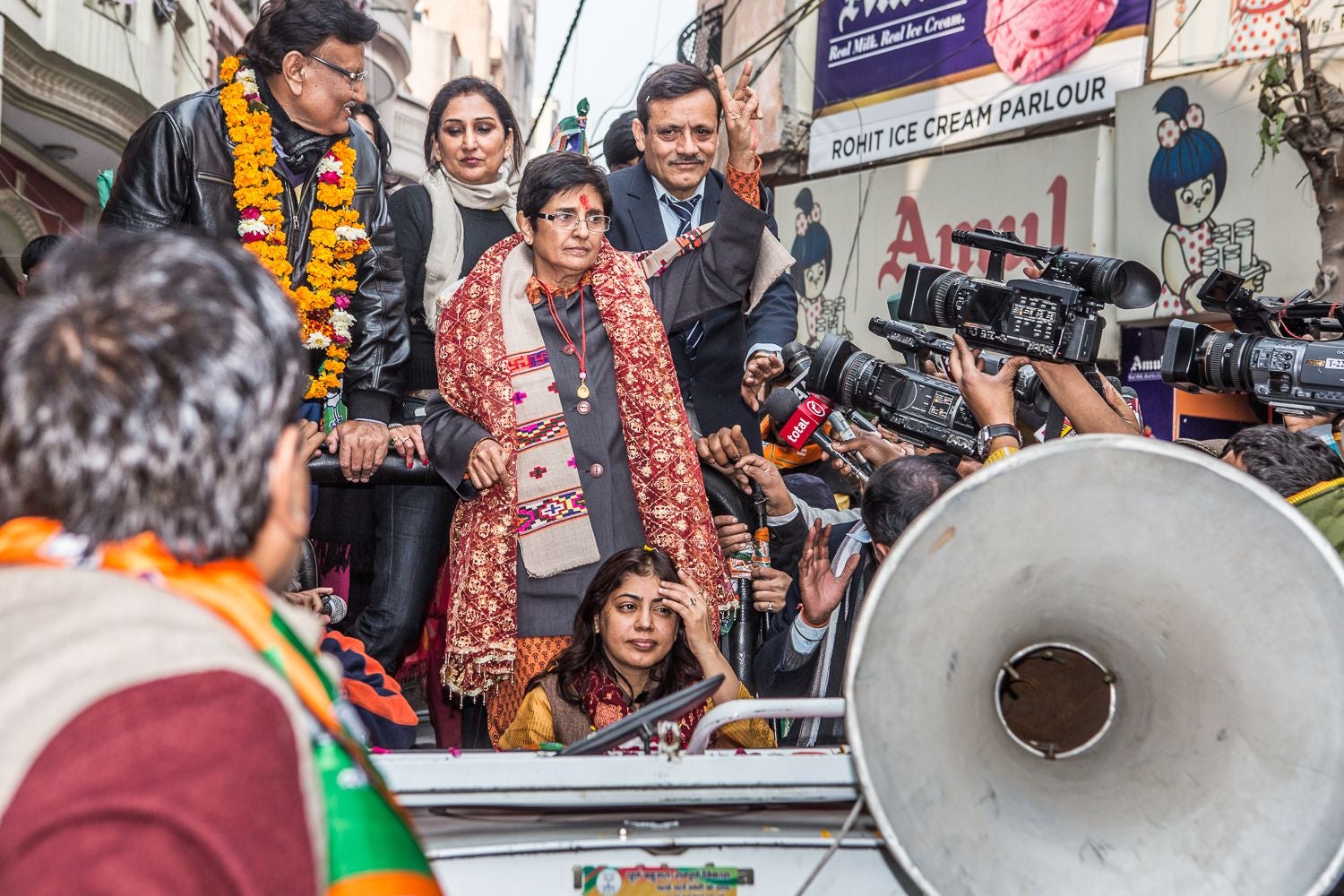
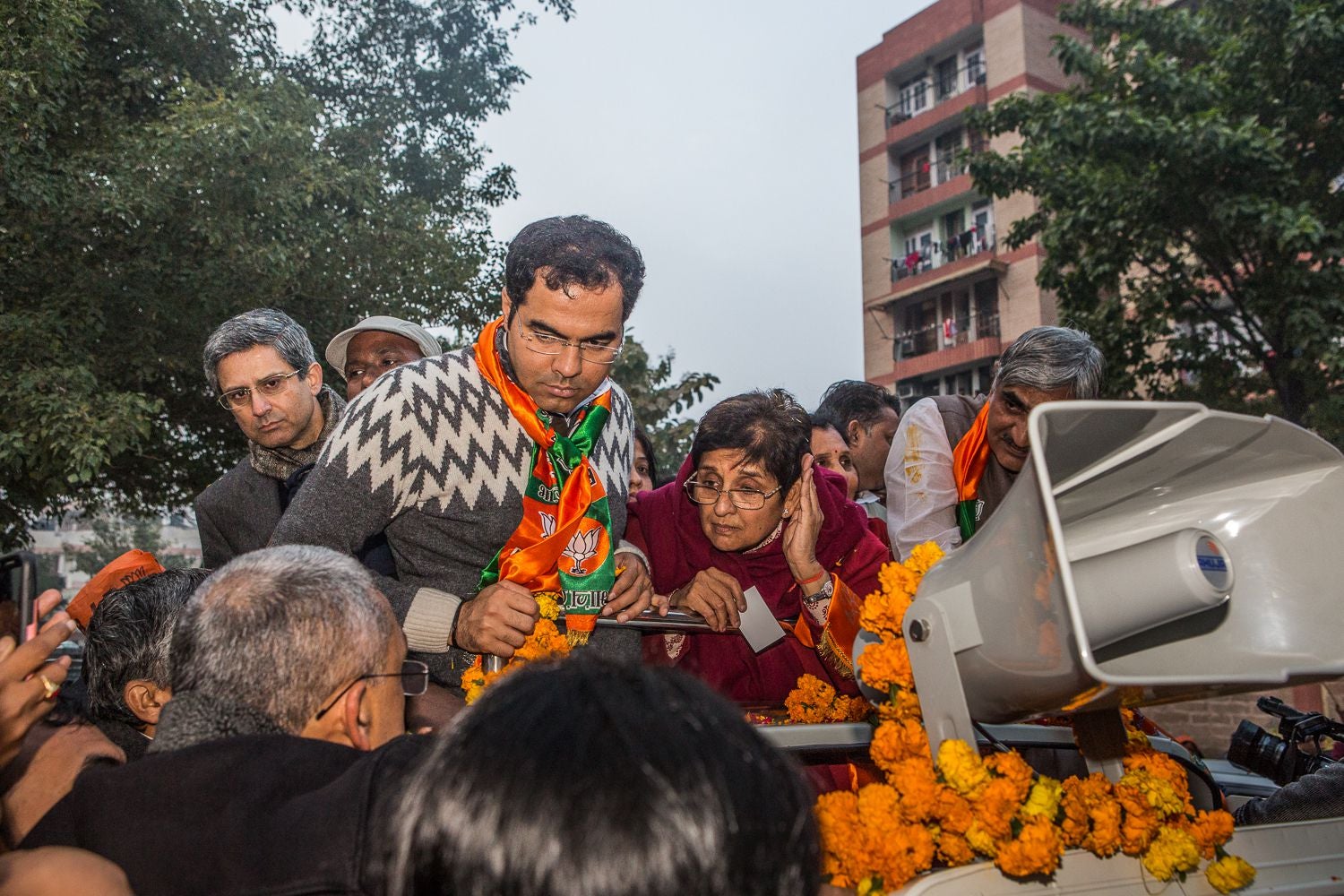
In creating this distance between the candidate and her supporters, the campaign was suddenly robbed of its colour, essence and personality. These roadshows were also loud and noisy, because Bedi was being trailed not just by her own party workers but also by hordes of journalists and camera crew.

Several residents complained of the daily traffic snarls Bedi’s presence in their area caused, making their morning commute to work extremely difficult.
“Krishna Nagar is a small place,” one resident told me. “Why must she come here everyday? We already know she is standing from this area.”